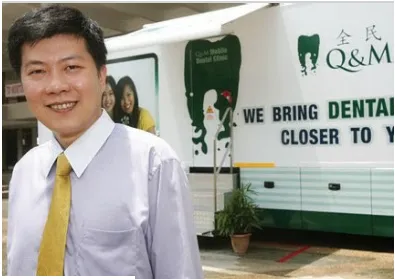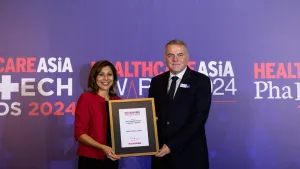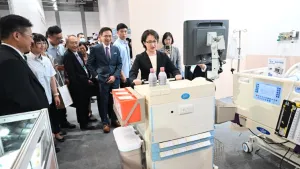
A bite of the China pie
Most people think the opportunities in healthcare are around ever growing private hospital groups. But one Singaporean company is showing there is more than one way to take a bite out of the healthcare apple. Q&M runs 60 dental practices across Singapore, with more clinics in Malaysia and China — making it one of the fastest growing dental chains in Asia.
Statistically speaking
With 180 dentists in Singapore the group employs one in seven dentists in the city state, and has 600,000 patients say “ah” each year. The group is led by Dr Ng Chin Sau, himself a dentist who was previously with Singapore’s
Ministry of Health. Dentistry is one area of healthcare set to explode in Asia, with figures showing that a
surprising 54% of Singaporeans do not visit a dentist even once a year.
The numbers for the rest of ASEAN and much of Asia would be worse than that. In the developed world there is one dentist per 1100 people, but in Singapore, one of the best healthcare centres in Asia, that ratio is one dentist for every 3,000 people — and in China it’s one per 10,000.
One benefit of being such a large firm is being able to work as a group and a multi-disciplinary team, rather than as individual dentists. Patients seem to like this because they can easily be referred to one of a number of specialists.
Check-ups in China
But it is in China where the group hopes to take a bigger bite of the pie. Only 8% of Chinese visit the dentist once a year, leaving 92% with poorer than could be hoped for oral hygiene. Q&M is investing heavily in setting up in China’s second tier cities and has a healthy $200 million war chest to do it.
They also, rather unusually for dental practice, have started buying dental supplies companies in China as well. It is an interesting vertically integrated approach, but one that could lead to a pearly-white future for the group.


















 Advertise
Advertise


